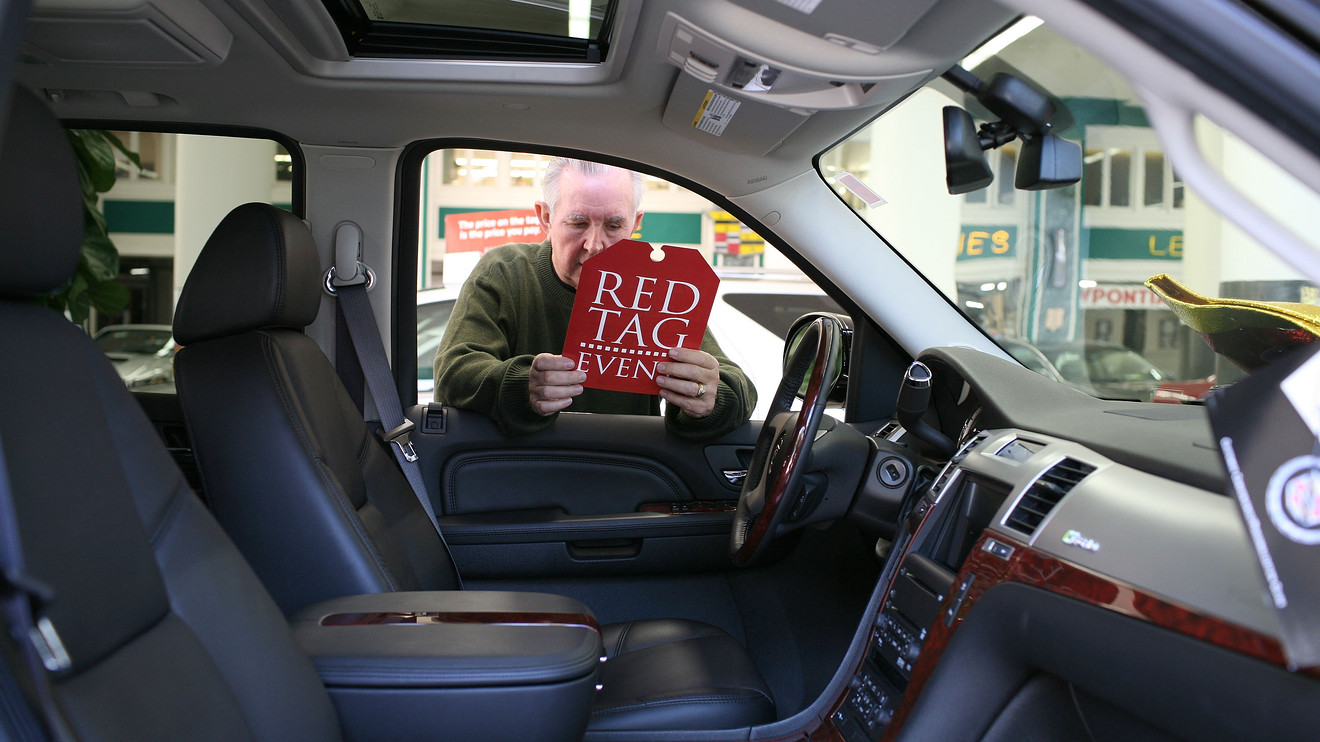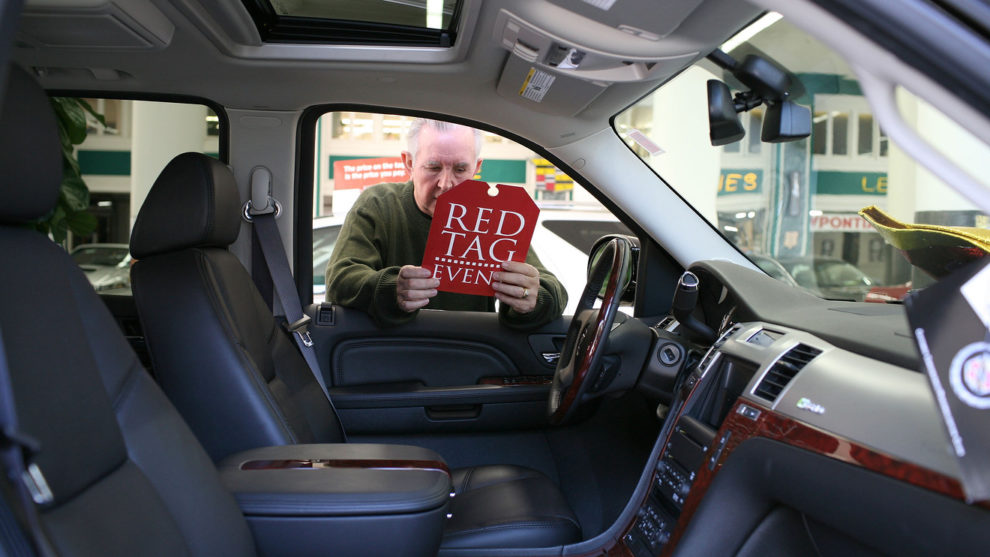
Car and truck shoppers might think the money in between the sticker price and the invoice is the sole source of profit for dealers. Guess again. It’s not. And it’s not even that big of a factor.
However, there are a wide-range of tools available to dealers to turn a profit. Here’s a list of some of the commonly used terms and how each contributes to a dealer’s bottom line.
MSRP and invoice difference is not dealer profit
Invoice: When shopping for a new car or truck, the salesperson might say: “This is a great deal, I’m selling the car at invoice, that’s dealer cost. I’m not making a nickel on the deal.”
The dealer may even reveal a dealer document sent by the manufacturer that shows the invoice price, the price the dealer allegedly paid to purchase that car. Sounds good except the invoice doesn’t necessarily reflect the actual price the dealer paid to purchase the car from the manufacturer.
Likely missing in the conversation is the word “holdback” and any automaker-to dealer-incentives that result in profit for the dealer, all of which is explained below. Even at so-called invoice pricing or dealer cost, there are ways the dealer can make a profit on each sale.
Dealers cash in on “holdback”
Holdback: Most automakers have used holdback for decades. Simply put, after the dealer has paid invoice for the vehicle, a small percentage of that invoice price or the Manufacturer’s Suggested Retail Price (it varies from manufacturer to manufacturer) is returned to the dealer when the vehicle is sold. Holdback or portions of the holdback money is a potential profit source, but some dealers rely on it to pay expenses.
Chevrolet, Buick and GMC return 3% of the sticker price to the dealer. Hyundai’s HYMTF, -4.92% percentage is 2%, based on invoice. Several luxury brands do not have a holdback policy; Cadillac ended its holdback program in 2016. And the money doesn’t come right away, dealers usually receive holdback money on a quarterly basis.
Holdback was created by automakers to help dealers manage expenses. For example, it reduces a salesperson’s commission because the commission is based on the vehicle’s price after holdback is taken out of the vehicle cost. It also helps the dealer with floor planning, which is the interest on the loan to keep vehicles in inventory until they are sold.
Dealers sometimes will sell a vehicle at invoice because they know at the end of the quarter their holdback money will materialize. Frankly, dealers don’t like to talk about holdback.
Invoice vs. sticker price
Given today’s transparency in invoice and sticker prices and the narrowing margin between the two, there’s not much wiggle room to negotiate a good deal.
“When I started in this business in 1972 the difference between invoice and manufacturer’s suggested retail price was about 22%. Now it averages about 6%” depending on the model, according to a Chevrolet dealer who did not want to be identified.
The margins are tight for most mainstream vehicles. For example, when new, the base 2018 Honda Accord EX sedan without options and not including transportation, taxes and registration had nearly a 9% difference between the invoice and the manufacturer’s suggested list price. The difference on the 2018 Chevrolet Malibu LT was 4%; 2018 Ford Fusion SE, 5.5%; and the 2018 Subaru Legacy 2.5i Premium, 5.5%. All percentages do not factor in any retail or factory-to-dealer incentives.
Related: The best times to buy a new car
Even luxury sedans fall into this pattern. For example, the difference between the invoice for a base 2018 Audi A4 and its sticker was about 7%; it was a bit less than 6% for the 2018 BMW 4 Series Gran Coupe.
Direct-to-dealer incentives help the bottom line
Manufacturer-to-dealer incentives: We hear all the time about retail incentives. They are advertised frequently on television, radio and the internet. A well-kept secret are manufacturer-to-dealer incentives which can sometimes range from hundreds to thousands of dollars per vehicle on slow-selling models.
Dealers say some of these manufacturer-to-dealer incentives drive them nearly crazy. They can pop up at any time and be limited to a small number of vehicles in their inventory. For example, the automaker may limit the manufacturer-to-dealer rebates to specific models in the dealer’s inventory that are identified by vehicle identification numbers. Another rebate may limit the rebates to models with certain option packages. A dealer could have five or six nearly identical models but only two qualify for the rebate.
Manufacturer-to-dealer sales targets
Also known as a stair-step incentive, this is the one that is the most dangerous for a dealer…and potentially the most lucrative. It could put a dealer out of business if he or she is unable to accurately predict how many vehicles can be sold each month.
Don’t miss: Expect good deals on any of these discontinued cars
Here’s how the program works: A dealer is told by the manufacturer at the beginning of the month that if he or she sells a certain number of cars and trucks combined, a specific number of cars or a specific number of trucks, that dealer will receive a specific dollar rebate for each vehicle sold under the program. The dollar amount could be $500 per vehicle, $1,500 per vehicle, or higher. Higher volume dealers have a much higher sales target than smaller dealers.
“To reach that quota, some dealers will sell their vehicles that month underneath triple net, underneath that 3% (holdback), below invoice,” the Chevrolet dealer said. “They are basically giving away cars that month in hopes of making their quota. If they don’t make their quota each month they will soon be out of business.” It is risky but it can generate big profits if the quota is reached.
Your trade may be the key to a profitable deal
Selling used cars and trucks: Many dealers admit they make more money per unit selling used vehicles than new vehicles. Dealers may spend $700 to $1,000 to recondition and clean up a used vehicle but the potential for profit could easily be $3,000 or $4,000 on a late model pickup truck and $2,000 on a crossover, for example.
Also see: 7 family sedans with the highest safety ratings
The market is hot for trucks and SUVs, making sedans more difficult to sell. In turn, that means lower profits per unit, and lower trade-in values because many buyers no longer want to own a car.
One General Motors GM, +1.06% dealer mentioned he purchased an off-lease Silverado pickup for $23,000 and put it on his lot for $29,500. “No problem selling that pickup,” he said.
This story originally ran on KBB.com.











Add Comment